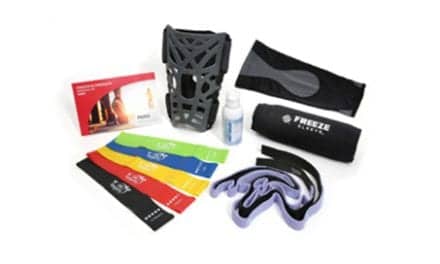Results from a clinical trial testing the MyoRegulator device for the non-invasive treatment of spasticity, published recently in Bioelectronic Medicine, suggest evidence for using MyoRegulator to treat upper extremity spasticity in subjects with chronic stroke, PathMaker Neurosystems Inc announces.
PathMaker Neurosystems Inc is a clinical-stage bioelectronic medicine company that develops non-invasive systems for the treatment of patients with spasticity and paralysis. The MyoRegulator is an investigational medical device and is limited by US Federal law to investigational use only.
The device is based on PathMaker’s proprietary DoubleStim technology (combining anodal trans-spinal direct current stimulation (tsDCS) and peripheral nerve direct current stimulation (pDCS)), which provides simultaneous non-invasive stimulation intended to suppress hyperexcitable spinal neurons involved with spasticity, the company explains in a media release.
“Current pharmacological approaches to managing spasticity have, at best, short-term efficacy, are confounded by adverse effects, and are often unpleasant for the patient,” said co-author Zaghloul Ahmed, PhD, professor and chairman, Department of Physical Therapy and Professor, Center for Developmental Neuroscience, CUNY and Scientific Founder of PathMaker Neurosystems.
“The initial study results demonstrate the potential of a novel, non-invasive treatment to reduce spasticity and improve functional recovery in patients with upper motor neuron syndrome after stroke.”
The single-blind, sham-controlled, crossover design study, authored by researchers at Feinstein Institute for Medical Research at Northwell Health (and led by Bruce Volpe, MD, included patients with upper limb hemiparesis and wrist spasticity at least 6 months after their initial stroke to test whether MyoRegulator treatment reduces chronic upper-extremity spasticity.
Twenty subjects received five consecutive 20-minute daily treatments with sham stimulation followed by a 1-week washout period, then five consecutive 20-minute daily treatments with active stimulation. Subjects were told that the order of active or sham stimulation would be randomized.
Clinical and objective measures of spasticity and motor function were collected before the first session of each condition (baseline), immediately following the last session of each condition, and weekly for 5 weeks after the completion of active treatments.
The results demonstrated significant group mean reductions from baseline in both Modified Tardieu Scale scores (summed across the upper limb, P), and in objectively measured muscle resistance at the wrist flexor (P following active treatment as compared to following sham treatment.
Motor function also improved significantly (measured by the Fugl-Meyer and Wolf Motor Function Test; P05 for both tests) after active treatment, even without additional prescribed activity or training. The effect of the active MyoRegulator treatment was durable for the 5-week follow-up period, the release continues.
“We are highly encouraged by these clinical results which demonstrate the potential of MyoRegulator to improve outcomes for patients suffering from spasticity, without the need for surgery or drugs,” says Nader Yaghoubi, MD, PhD, president and chief executive officer of PathMaker.
“Building on these results and our ongoing clinical trial in Europe, we expect to initiate a US multi-center, pivotal, double-blind clinical trial supported by the National Institute of Neurological Disorders and Stroke (NINDS) in early 2020.”
[Source: PathMaker Neurosystems Inc]





